| |
Grafenwoehr Training Area ( GTA )
Located 40 kilometers north of
Hohenfels, Grafenwoehr was for the Eaglehorse and remains to this
day, the primary live fire range complex in support of US Army
forces in Germany. In conjunction with the 7th Army Combined Arms
Training Center located at Rose Barracks, GTA played a major part in
the story of the squadron in Germany. In addition to the maneuver
space provided and the full array of live fire ranges, Grafenwoehr
and CATC supported the fielding of all major new combat systems in
USAREUR to include in their day, M551, M60A3, M1 and M3 as well as
many professional development courses and academies to assist
officer and NCO development and command readiness. Seemingly every
trooper from the Eaglehorse period in Germany has a full array of
Graf "war stories" to tell. They all seem to begin with. "well,
first we rail loaded at the BK Bahnhof ...".
| |
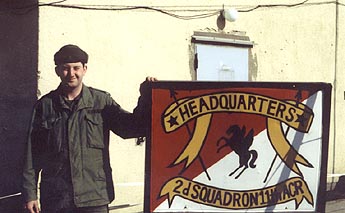 |
|
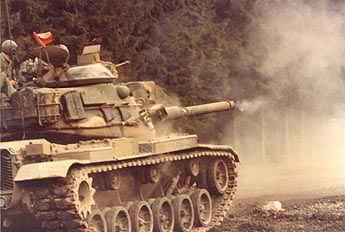 |
|
| |
Lt Owens, S1,
Eaglehorse Forward at GTA during hand off of M60A3.
--Bob Stefanowicz |
|
G Troop A3, Level
1 gunnery, Table VI, 81.
--Bob Stefanowicz |
|
The NCO's from the 2/14th ACR period
recall "Graf" as where "stripes were earned or lost on the tank
qualification range". Eaglehorse tankers from the early years of the
2/11 ACR recall tank qualification and platoon battle run on Ranges
42 and 79 respectively. Live fire of the Sheridan missile system
was on Ranges 5 and 23 to the accompaniment of a full array of
civilian and military technicians. Opening times and target closing
times were factored in to tank gunnery qualification scores in
addition to hitting the target. In pre-76 gunnery, outside monitors
listened in to tank crew battle drill conversations and subtracted
points for non standard commands. GTA was the last place in Germany
where tanks fired service ammunition at target hulks for the long
remembered "splash" of sparks and debris when steel hit steel.
For HOW Battery, the critical training
event of Live Fire ARTEP and Safe to Fire Certification occurred at
GTA; the mortar crews had extensive firing points to practice their
trade. As years progressed, the squadron turned in the M60A1 tanks
and drew M60A3 at Graf, in the middle 1980's, M1 and M3 were
likewise fielded to Eaglehorse with complete training programs for
crews and associated personnel.
| |
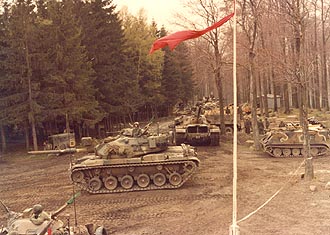 |
|
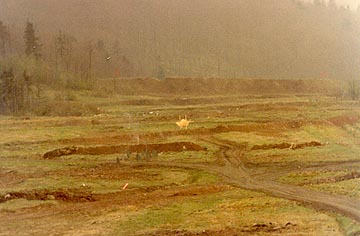 |
|
| |
Rather busy area
just behind range.
--Bob Stefanowicz |
|
Tracer fire
streaks towards BMP target form on moving track. Personnel target
forms can be seen in foreground.
--Bob Stefanowicz |
|
Past and Present
The military history of Grafenwoehr is
far longer than Wildflecken or Hohenfels. The first uses of the
area to support range and maneuver training date to 1908 with the
official opening of the training area listed at 1910. Through
the First World War, land acquisition and range construction
continued. Following the defeat of Germany, the small army allowed
by treaty continued to use Grafenwoehr and with the rise of fascism
in the 1930's, the area saw rapid growth as the "new German Army"
was created.
As one of the major training areas in
support of the Wehrmacht, Grafenwoehr saw the construction of
several famous German Army units to include, the 88th and 98th
Divisions, the "Blue" Division, consisting of Spanish volunteers,
several Italian divisions and major parts of the Africa Corps. Labor
camps supported ammunition factories and POW camps also are a part
of the war years.
| |
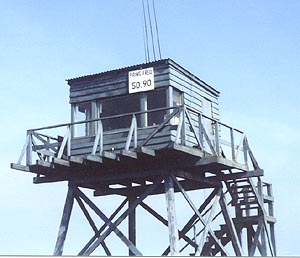 |
|
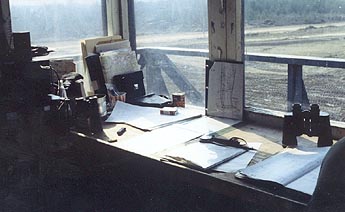 |
|
| |
Range tower in
support of Table VII during the hand off of M60A3 to Eaglehorse.
--Bob Stefanowicz |
|
Interior view of
tower, Lt Niel is running the " A " course, I am responsible for the
" B " night portion. As I recall, for each Troop, there was a week
of classroom training with the new A3's, the drivers went to a
terrain driving and maintenance courses. Then, off to the ranges
finishing with VII and rail load home.
--Bob Stefanowicz |
|
The American period began in 1947 and
over the next six years, the ranges and facilities were upgraded to
make GTA the major hub for tank training supporting US forces. Camps
Aachen, Algier and Normandy were built with full billets while Camp
Kasserine became the major "tent city" area. Through the 1950's and
60's, a steady flow of US units trained at Graf, ranges were
upgraded and the classrooms and motorshops necessary to support
fielding of new systems were developed at Rose Barracks.
| |
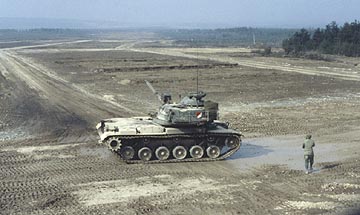 |
|
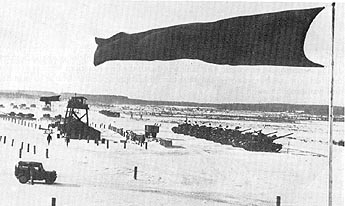 |
|
| |
Brand new A3 on
the " A " portion of the course.
--Bob Stefanowicz |
|
Range 42, tank
table VIII, crew qualification, mid 1970's.
--Paul Burckhardt |
|
In 1981, the ranges became home to
the "Canadian Army Trophy", a tank gunnery contest designed to
foster friendly allied competition in tank gunnery. This became a
popular event and saw the best crews sent by each NATO nation test
their skills and respective tanks. The first year of contest, the US
Army M60A3 team finished third behind Leopards fielded by Belgium
and West Germany.
| |
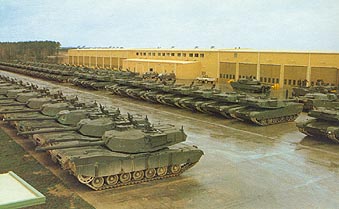 |
|
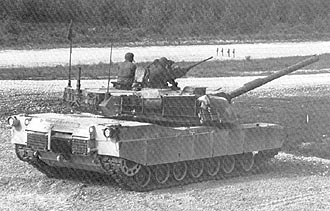 |
|
| |
M1
training and hand off point as GTA and Rose Barracks supports
fielding of new system.
--Paul Burckhardt
NOTE from Rick Laws:
This building is now is the Battalion headquarters (upstairs) and
the HHC and B Company motor pool of the 94th Engineer Battalion
(Heavy). Lots of bulldozers, graders, scoops and dump trucks. I was
the 2/11th S4 Representative for the turn in of the M60 tanks to
Mainz and the hand off representative for the M1s. During my last
tour in Germany I was the Property Book Officer supporting the 94th
Engineer Battalion, in this building. |
|
Newly fielded M1 takes to the redesigned tank ranges at GTA.
--Paul Burckhardt |
|
The following year, as the M1 fielding
plan became reality, a major range upgrade program began to support
M1 and M2-3. To date, steady improvements and changes have been
implemented to keep the ranges of GTA on the cutting edge of
technology in support of USAREUR.
| |
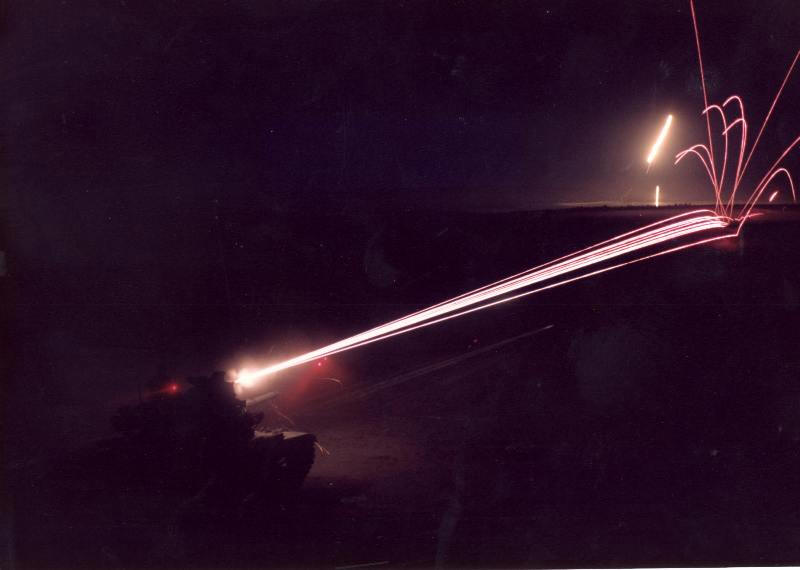 |
|
| |
M60 night fire with illum
--Tom Sommerkamp |
|
|
|